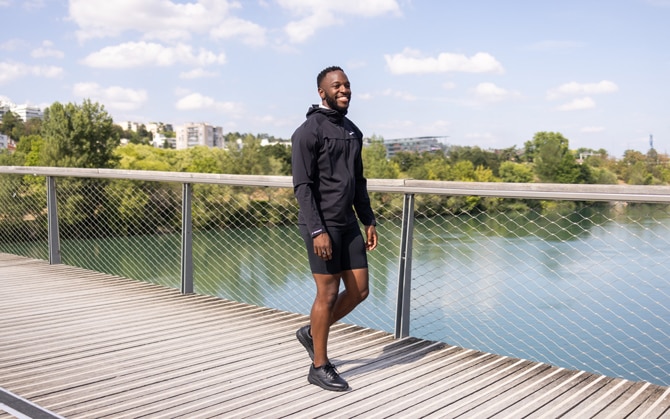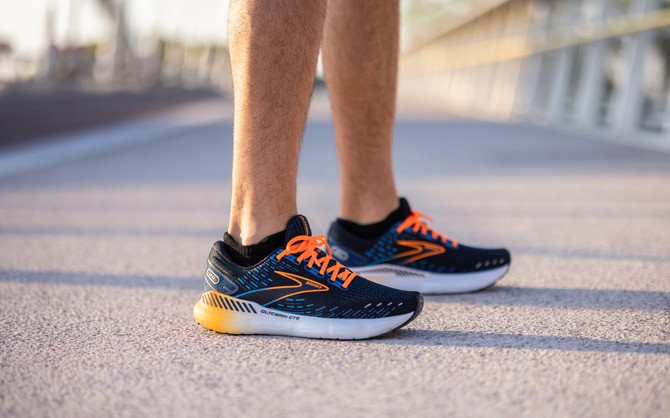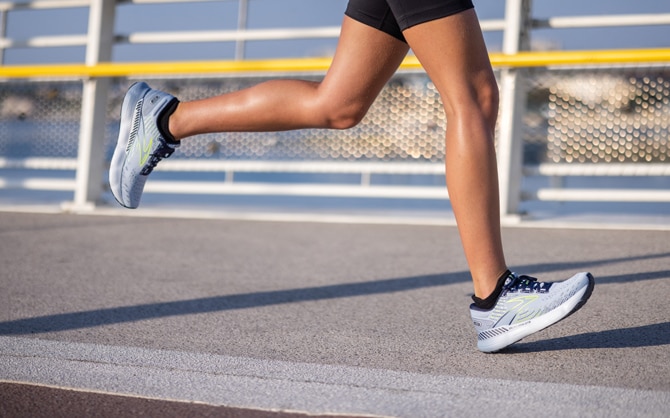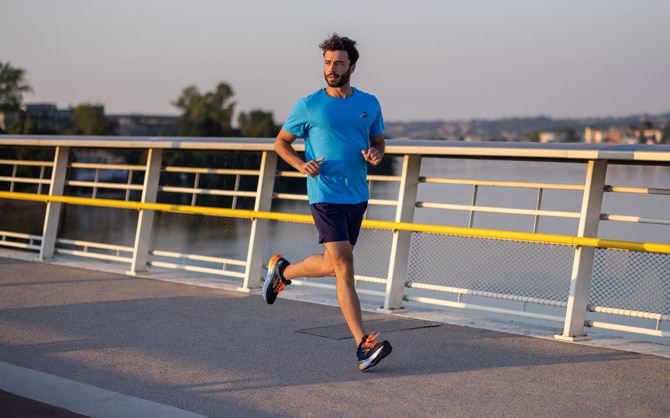How to find the best running shoes for flat feet?

There was a time when having flat feet meant something was wrong. Feet were supposed to feature a nice arch and anything that looked different, the story went, required some intervention. This carried over to running shoes, too. Flat feet? Control that foot with orthotics and shoes.
Times have changed, however, and now we know that flat feet are often just the way someone is built. Here's how to find a good pair of running shoes for flat feet and other important things to know.
Running with flat feet: what you need to know
Having flat feet shouldn't discourage you from running. But it does have the potential to increase your risk of certain injuries if you don't find the right shoes for you. When we run, the arch of the foot acts like a springboard, allowing us to more effectively push off as well as lessening the impact when our feet strike the ground. If you don't have an arch, then your foot doesn't have that natural shock absorber.
But that's not to say that running with flat feet will definitely lead to injuries. It's simply a case of getting your feet properly assessed and finding the right shoes for you.

There's no tried-and-true method for determining if you have flat feet, and quite often, that's just fine. If you were born with flat feet — called anatomical flat feet — you've likely spent many years trying to accommodate them in your running shoes. But the truth is, your quest for the best running shoes for flat feet might be simpler than you thought.
That's also the conclusion of Stephen Pribut, DPM, a podiatrist and part of the clinical faculty at the George Washington University Medical School's department of surgery. "When I assess a patient, I'm looking to see what's worked in the past, what hasn't, and whether or not they're having discomfort," he explains. "Then I'll try to help them find a shoe that fits well and keeps their feet comfortable."
Sometimes, the discomfort flat-footed runners experience is due to a rush to automatically classify them as overpronators and then try to correct that motion. But that approach is quickly going by the wayside as podiatrists and runners have learned trying to control that natural motion doesn't serve much purpose, and might even cause running to be uncomfortable. Everyone pronates to some degree — it's part of the foot's natural gait — so fighting that motion isn't necessarily a solution.
If your feet are flat because your arches have weakened over time and collapsed, you might need to add some arch support in the form of a stability shoe for a time. But working on foot strength in the meantime should help you move away from so much control.
This can start with simple "toe yoga" exercises — lifting your big toe while the other four remain on the ground and vice versa — and advancing to towel scrunches, picking up marbles with your toes, and walking in your bare feet on a sandy beach, if you have one nearby. All will help your flat feet regain the strength they've lost to provide a more comfortable gait while running.

Understanding your running shoe needs
If you've been running long enough, odds are that at some point in your shoe buying process you did the foot "wet test." This often involved getting your feet wet, walking across some concrete, and having a shoe store employee deem your feet flat, "normal," or high arched. This would inform the shoe-buying process, and then out the door you went.
Today, the wet test is rarely used and if it is, you should be a bit leery of the shoe store you're turning to for expert advice. Instead, says Pribut, work with your running shoe store to find a comfortable shoe that fits well. "More often than not, you can start with a neutral shoe and go from there," he says. "I like shoes without too much cushioning or anything extreme in any direction. The shoe's last is important, as are trying several widths."
A shoe's last is the mold on which a shoe is built. Too narrow or shaped in a way that doesn't allow a flat foot to find room in the footbed, and you'll be uncomfortable. Look to see that your feet make contact with the footbed and don't spill over onto the mesh sidewalls, which won't deliver the support you need while running.
To find a good pair of running shoes for your flat feet, you will have to try on several pairs, ask the experts at the running shoe store to watch you move around in them, and finally, choose the pair that leaves your feet the happiest. Most stores will have a return policy within a short period of time after, too, so if you feel uncomfortable, send them back and consider trying something different.

Brooks shoes that work well for flat feet
Best women's running shoes for flat feet
If you need a little extra support, Brooks has plenty of options to suit, whatever your budget. As well as Ariel, the Addiction GTS and the super cushioned Glycerin GTS are great choices for women. The Glycerin GTS is packed full of super-soft DNA LOFT v3 for total comfort underfoot, with GuideRails for extra support. Plus, it comes in loads of fun colours – so you can match your shoes to your running outfit.
Best men’s running shoes for flat feet
And, of course, men don't need to miss out – all of these models are available for male runners too! Experience maximum comfort and supreme softness in the Glycerin GTS. Or, if you like an extra roomy fit (great for wide feet), the Addiction GTS could be the perfect choice for you. With arch support and added cushioning, you've got everything you need for a comfortable run, whatever your mileage.
Again, comfort should be your highest priority when selecting the best running shoes for flat feet. Brooks makes several good "all-around" shoes that will likely fit the bill. Pribut is a fan of models like the Ariel or the Beast, both of which hit some of the more middle-of-the-road marks in specs.
If you're currently experiencing a fallen arch and need some extra support while you rehab your foot strength back to normal, consider a model like the Dyad, which adapts to your feet as you run. They're also roomy and allow space for a flat or fallen arch foot to get comfortable.
With some trial and error, even runners with the flattest of feet should be able to find their sweet spot in shoes. Before heading to the running store and giving new models a go, however, check in with your favorite foot or sports doctor to get their advice. Put it all together, and selecting the best running shoes for flat feet can lead to many successful miles ahead.
Our writer's advice is intended for informational or general educational purposes only. We always encourage you to speak with your physician or healthcare provider before making any adjustments to your running, nutrition, or fitness routines.